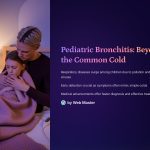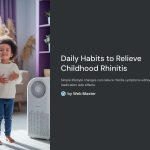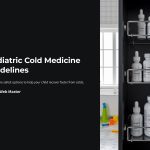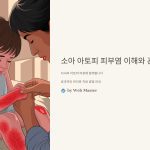 When your child catches a cold, the right medicine can make a huge difference in recovery time and comfort. But with so many options available, how do you choose the safest and most effective treatment? Discover the different types of pediatric cold medicines, their usage criteria, and expert-backed guidance to avoid common mistakes and achieve better health outcomes for your child.
When your child catches a cold, the right medicine can make a huge difference in recovery time and comfort. But with so many options available, how do you choose the safest and most effective treatment? Discover the different types of pediatric cold medicines, their usage criteria, and expert-backed guidance to avoid common mistakes and achieve better health outcomes for your child.

Understanding Pediatric Cold Medications: Key Categories You Must Know
Pediatric cold medications fall into several main categories, each targeting different symptoms. It’s crucial to understand the purpose and action of each to select the right treatment for your child. The primary categories include:
- Antipyretics (fever reducers): such as acetaminophen and ibuprofen, used to reduce fever and alleviate pain. These are among the most commonly prescribed drugs for children with colds.
- Cough suppressants: like dextromethorphan, helpful in reducing persistent coughing, though often not recommended for young children due to potential side effects.
- Expectorants: such as guaifenesin, which help loosen mucus, making it easier for children to cough it up.
- Antihistamines: used primarily for allergy-related symptoms but sometimes included in cold medication for nasal congestion.
- Decongestants: such as phenylephrine or pseudoephedrine, used to relieve nasal stuffiness—typically not recommended for children under 6.
Understanding these categories helps parents and caregivers identify which medications address specific symptoms and which to avoid in certain age groups. This foundational knowledge is key to safe and effective treatment.

Age-Based Prescription Guidelines: Why It Matters More Than You Think
The age of the child is a critical factor in determining which cold medications can be prescribed or recommended. The U.S. FDA and global pediatric health organizations strongly advise against the use of OTC cold medicines in children under the age of 2, and caution is advised for children up to age 6.
- Infants (0–2 years): Avoid all OTC cold medications. Use saline nasal drops, humidifiers, and plenty of fluids instead.
- Toddlers (2–6 years): Some medications like acetaminophen or ibuprofen can be used for fever. Avoid cough suppressants and decongestants unless specifically prescribed.
- Children (6–12 years): More options become available, including certain decongestants and antihistamines, but careful monitoring and dosage control are essential.
Doctors usually tailor prescriptions based on age, weight, and symptom severity. Parents must never guess dosages or give adult formulations to children. Always consult a pediatrician before administering any medication.

Symptom-Based Medicine Selection: Matching Treatment to Needs
Choosing the right cold medicine should depend on the most prominent symptoms your child is experiencing. Treating all symptoms with a multi-symptom drug may lead to unnecessary side effects. Instead:
- Use fever reducers only if the child is uncomfortable or has a high fever.
- Use cough medicine only when the cough disrupts sleep or daily function.
- Use decongestants only when nasal blockage is severe and affects breathing or feeding.
- Avoid combination drugs unless a healthcare provider recommends them.
Parents should be aware that most cold symptoms resolve naturally in 7–10 days. The goal of medication should be comfort and not curing the cold, which is viral and self-limiting.

Dosing Rules and Safety Tips Every Parent Must Follow
Proper dosing of pediatric cold medications is non-negotiable. Overdoses can be dangerous, while underdoses may render treatment ineffective. Key tips include:
- Always use the dosing device provided with the medication.
- Measure by weight, not age, for more accurate dosing.
- Avoid using kitchen spoons or approximations.
- Do not mix medications with the same active ingredients (e.g., two drugs containing acetaminophen).
- Keep a log of administered doses and times.
Store medications out of children’s reach and dispose of expired drugs properly. Read all labels carefully and look for age-appropriate symbols or warnings.

Natural Alternatives and Home Care Strategies
In many cases, natural remedies and home care strategies can effectively support recovery and reduce the need for medication. These include:
- Honey (for children over 1 year): Soothes sore throats and suppresses cough.
- Warm fluids like soup or tea: Help relieve congestion and hydrate.
- Humidifiers and saline sprays: Keep nasal passages moist and clear.
- Proper rest and hydration: Fundamental to quick recovery.
Natural options can reduce the need for pharmacological intervention, especially in mild cases. Always consult a healthcare provider before mixing natural and OTC remedies.

When to See a Doctor: Recognizing Red Flags
While most colds are mild, some symptoms indicate a more serious condition requiring medical attention. Seek professional help if:
- Fever lasts more than 3 days or exceeds 39°C (102.2°F)
- Cough worsens after several days or produces green/yellow mucus
- Child has trouble breathing, wheezing, or rapid breathing
- There is persistent ear pain or drainage
- Dehydration signs appear (dry lips, no tears, sunken eyes)
Don’t wait for symptoms to worsen. Early intervention can prevent complications like pneumonia, bronchitis, or sinus infections in young children.
*Capturing unauthorized images is prohibited*





